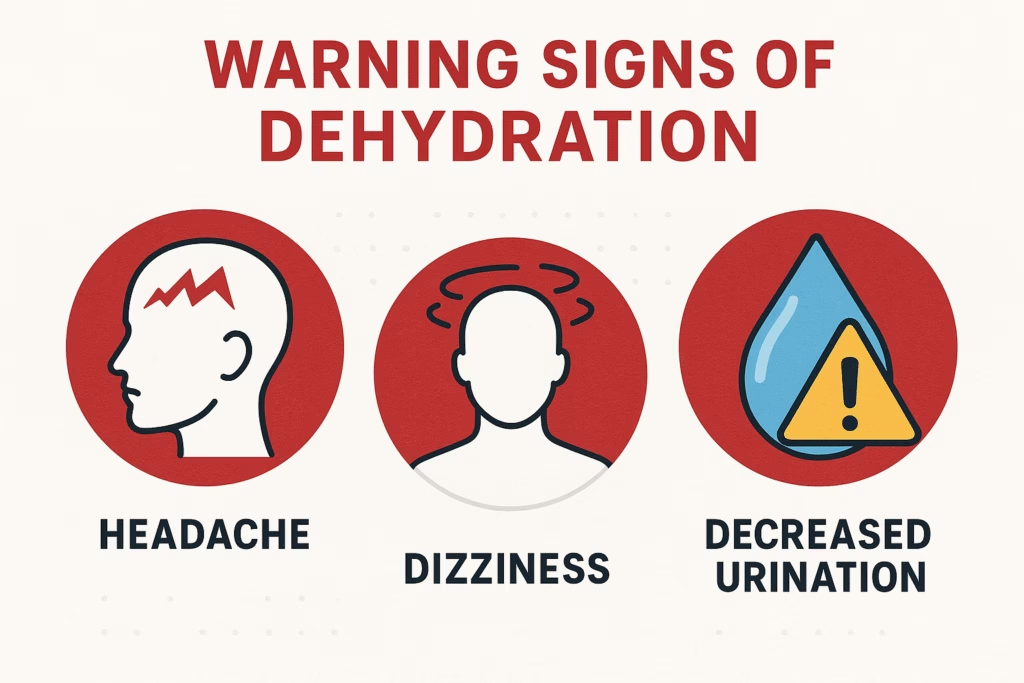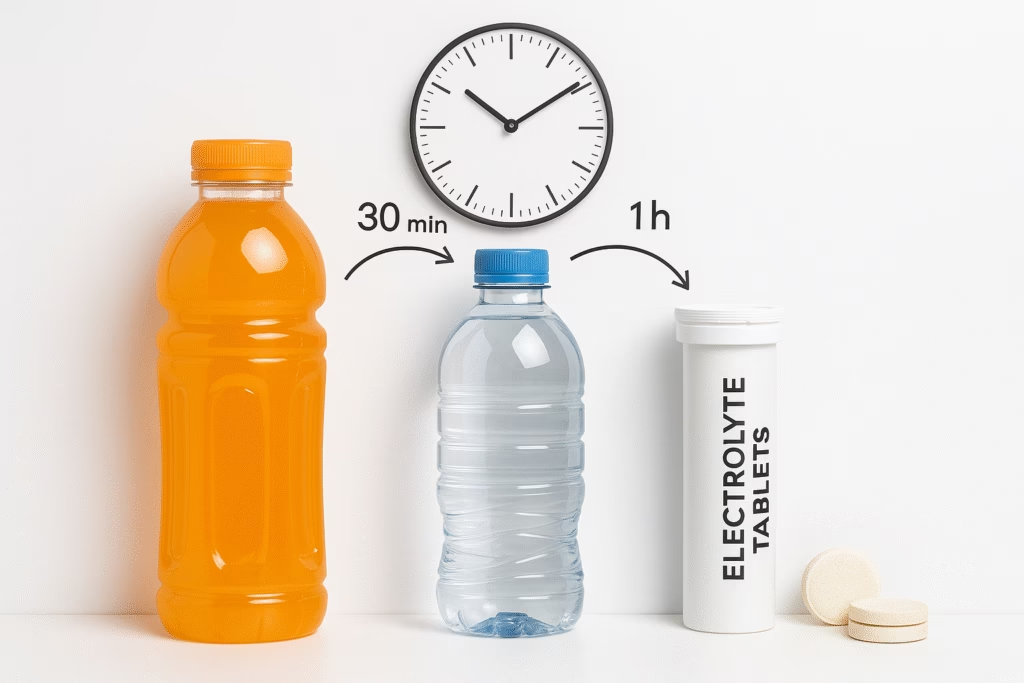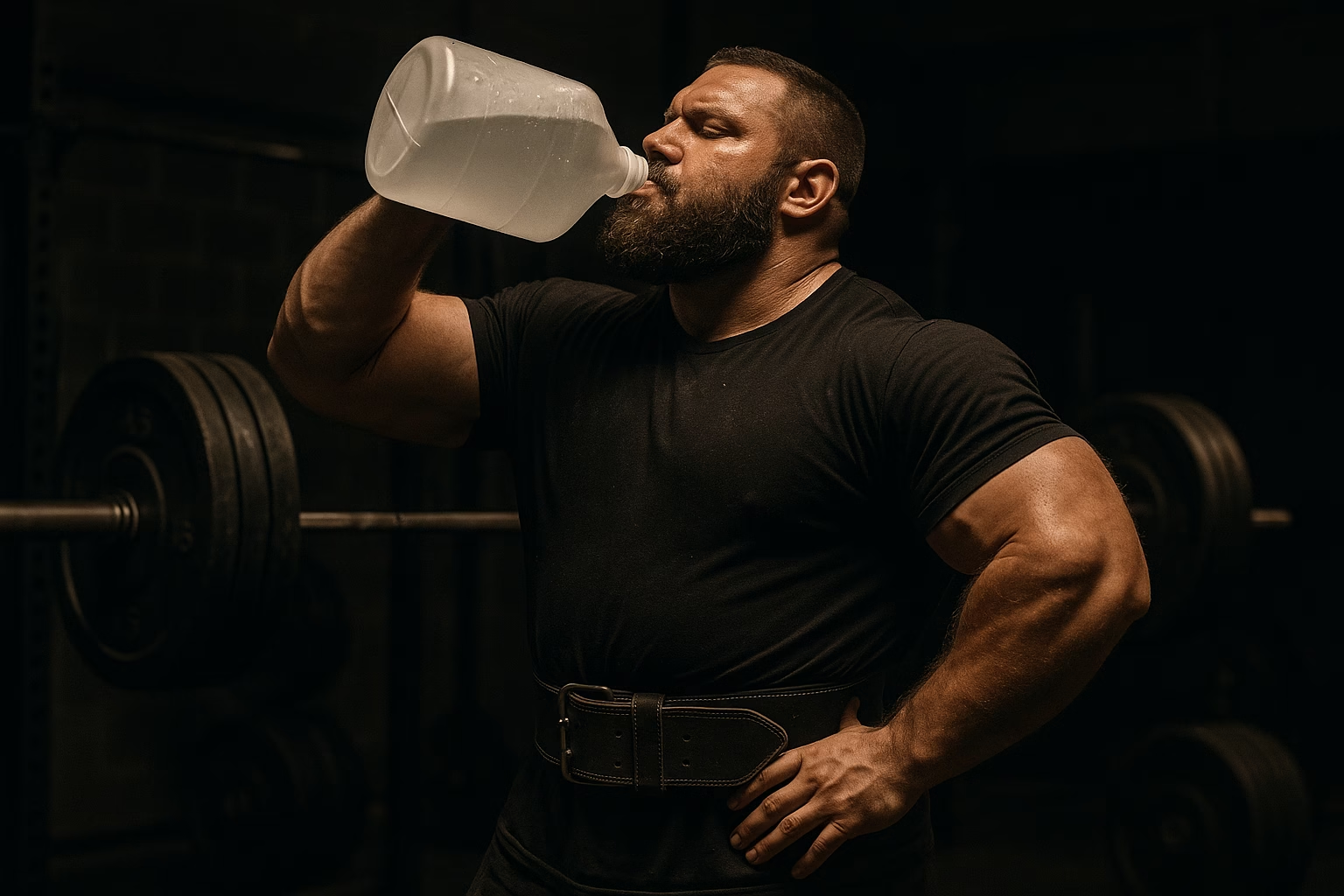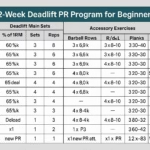Water cutting can help you make weight class by losing 3-8 lbs of water weight in 5-7 days. Follow the timeline, don’t go extreme, prioritize safety over scale weight.
What is Water Cutting?
Water cutting = temporarily losing water weight (not fat) to make a lower weight class while keeping your strength.
The process: Drink lots of water for 5 days → Stop drinking water 1-2 days before weigh-in → Your body keeps peeing out water → You lose 3-8 lbs → Rehydrate after weigh-in.
Quick Timeline (The Cheat Sheet)
| Days Before Meet | Water Intake | What to Do | What NOT to Do |
|---|---|---|---|
| 7 days | Normal (1 gallon) | Plan your cut | Don’t wing it |
| 5-6 days | High (1.5-2 gallons) | Start loading | Don’t train heavy |
| 3-4 days | Very High (2+ gallons) | Keep loading | Don’t eat less food |
| 2 days | Maximum (2.5+ gallons) | Taper training | Don’t use saunas excessively |
| 1 day | Almost nothing (8-16 oz) | Rest completely | Don’t panic about weight |
| Weigh-in day | Sips only | Make weight | Don’t dehydrate dangerously |
| After weigh-in | Rehydrate gradually | Prep for lifting | Don’t chug everything at once |
The DO’s (Keep It Simple)
✅ DO: Start Small
- First time? Cut only 3-5 lbs max
- Practice during training, not at important meets
- Get experience before going aggressive
✅ DO: Follow the Timeline
- Week 1: Drink more water (1.5-2 gallons/day)
- Days 1-2: Cut water to almost nothing
- Weigh-in: Sip only if desperate
- Post weigh-in: Strategic rehydration
✅ DO: Plan Your Comeback
- Know exactly what you’ll drink after weigh-ins
- Sports drinks + water + electrolytes
- Start rehydrating immediately after stepping off the scale
✅ DO: Monitor Warning Signs
Stop immediately if you experience:
- Severe headaches
- Dizziness when standing
- Nausea or vomiting
- Muscle cramps
- Confusion
✅ DO: Keep Training Light
- No heavy lifting during water cut week
- Your strength will be temporarily down
- Focus on technique and light weights

The DON’Ts (Avoid These Mistakes)
❌ DON’T: Go Extreme on Your First Try
- Never cut more than 8 lbs through water manipulation
- Don’t combine with crash dieting
- Don’t use diuretics or laxatives
❌ DON’T: Ignore Your Performance
- If you feel weak during training → ease up
- If you’re dizzy → drink some water
- Making weight doesn’t matter if you can’t lift
❌ DON’T: Start Too Late
- Don’t try to cut 5+ lbs in 24 hours
- Don’t start the process 2 days before meet
- Don’t rush if you’re not on track
❌ DON’T: Forget About Electrolytes
- Don’t just focus on water
- Don’t ignore sodium/potassium balance
- Don’t skip post-weigh-in electrolyte replacement
Common Water Cut Mistakes (Learn From Others)

Mistake #1: Scale Obsession
- Weighing yourself every hour
- Panicking about daily fluctuations
- Solution: Weigh once in the morning, that’s it
Mistake #2: All-or-Nothing Mentality
- “I’m 2 lbs over, might as well quit”
- Going to dangerous extremes to make weight
- Solution: Have a plan B weight class
Mistake #3: Poor Rehydration
- Chugging a gallon of water immediately
- Ignoring electrolytes
- Solution: Gradual rehydration with sports drinks
Mistake #4: First-Time Disasters
- Trying water cutting for the first time at nationals
- No practice runs
- Solution: Practice during mock meets or training
Sample 7-Day Water Cut Schedule
Days 7-5: Loading Phase
- Water: 1.5-2 gallons daily
- Food: Normal eating
- Training: Light technique work
- Goal: Teach body to pee more
Days 4-3: Peak Loading
- Water: 2+ gallons daily
- Food: Normal portions, slightly more sodium
- Training: Very light or rest
- Goal: Maximize water elimination hormones
Days 2-1: Depletion
- Day 2 Water: 16-32 oz max
- Day 1 Water: 8-16 oz max
- Food: Low carb, low sodium
- Training: Complete rest
- Goal: Continue peeing while drinking almost nothing
Weigh-in Day
- Water: Sips only if absolutely necessary
- Food: Maybe a small piece of fruit
- Goal: Make weight, start rehydration plan immediately
Red Flags: When to Stop Immediately

| Symptom | What It Means | Action |
|---|---|---|
| Dark yellow/orange urine | Severe dehydration | Drink water now |
| Can’t stand without dizziness | Blood pressure issues | Stop the cut |
| Severe headache | Electrolyte imbalance | Add sodium + water |
| Muscle cramps | Mineral deficiency | Electrolytes + medical help |
| Confusion/irritability | Brain dehydration | Emergency rehydration |
Quick Rehydration Protocol

Immediately after weigh-in:
- 16-20 oz sports drink (first 30 minutes)
- 8-12 oz water (next 30 minutes)
- Continue alternating every 30-60 minutes
- Add electrolyte tablets if available
- Monitor urine color (should get lighter)
Don’t: Chug a gallon immediately (you’ll just pee it out) Do: Sip consistently for 2-4 hours
Who Should NOT Water Cut
❌ First-time competitors ❌ Anyone with kidney/heart problems
❌ People who get dizzy easily ❌ Athletes under 18 ❌ Anyone without experienced supervision ❌ People who panic under pressure
The Bottom Line
Water cutting works, but it’s not magic:
- You can lose 3-8 lbs in a week
- It’s temporary water weight, not fat
- Your strength will be slightly down until you rehydrate
- Safety always trumps making weight
Success tips:
- Start conservative (3-5 lbs max first time)
- Practice during training cycles
- Have an experienced person guide you
- Plan your rehydration as carefully as your cut
- Always have a backup weight class
Remember: Many elite powerlifters compete at their natural weight and do just fine. Water cutting is a tool, not a requirement for success.
The most important thing: Your health and performance matter more than any weight class. If something feels wrong, stop the cut and compete heavier. You can always try again at the next meet with more experience.
FAQ
Q: How much weight can I cut?
A: 3-5 lbs first time, up to 8 lbs with experience
Q: How long does it take?
A: 5-7 days for the full protocol
Q: Will I be weaker?
A: Slightly, until you rehydrate (2-4 hours post weigh-in)
Q: Is it dangerous?
A: Can be if done wrong. Start conservative, monitor symptoms
Q: What if I don’t make weight?
A: Have a backup plan. Compete in the next weight class up



